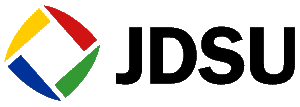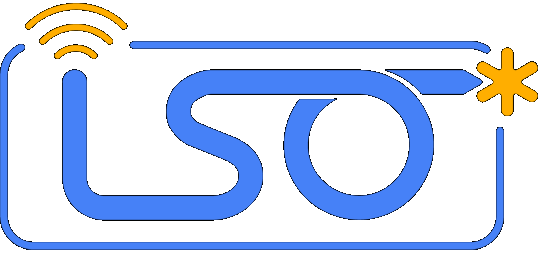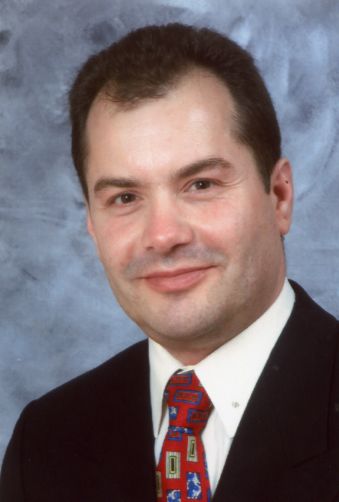
|
20. SEMINAR OPTIČNE KOMUNIKACIJE
|
Razstavljavci merilne opreme:Medijski pokrovitelj:Organizatorja:Fakulteta za elektrotehniko Laboratorij za sevanje in optiko |
Petek, 1. februar 2013 ob 1015-1200 Photonic Millimeter-Wave and THz Generation in Wireless Communications, Instrumentation, and SensingAndreas Stöhr, Universität Duisburg-EssenUltra-high frequency photonic components and subsystems are of highest relevance to a number of modern applications in communications, instrumentation and sensing. Applications include low phase noise photonic based millimeter-wave and THz oscillators and integrated photonic transmitter and receiver for spectroscopic applications but also ultra-high data rate wireless communication systems. Ultra-fast carrier dynamics are playing a key role for the development of III/V semiconductor based photonic components but more and more also nano-structured and plasmonic devices gain importance. The talk is divided into two parts; the first part will deliver innovative technological solutions for the development of dual-frequency lasers and ultra-high frequency photoreceiver components operating well up to the THz domain. The first part of the talk will also report on advanced integrating and packaging technologies for the development of photonic subsystems to realize complex subsystems such including photonic wireless transmitter and receiver modules. In the second part, the talk will discuss the application of photonic technologies and techniques in communications, instrumentation and sensing. A clear focus will be on ultra-high data rate wireless communication systems operating in the mm-wave and THz region. After discussing general aspects of the wireless link including atmospheric absorption at such high carrier frequencies, a further point of the talk will be on the actual and future regulations and standardizations for millimeter-wave and THz wireless communications. Next, innovative photonic system approaches enabling ultra-high data rate wireless communication operating up to 100 Gb/s and more will be reported. Furthermore, attention will be put to answer the question on how to integrate those systems in future next generation optical networks. Author Biography
|
| © 2012 Laboratorij za sevanje in optiko | Design by: LSO web team |







 Andreas Stöhr (M’97–SM’08) received the Dipl.-Ing. and Dr.-Ing. degrees in Electrical Engineering from Gerhard-Mercator-University, Germany. Since 1995 he is with ZHO/Optoelektronik at Universität Duisburg-Essen, Germany. In 1998 and 1999 he joined the National Institute of Information and Communications Technologies (NiCT) in Tokyo, Japan. In 2009, he was a research fellow with France Telecom – Orange Labs, Lannion, France, where he has been working on high-data rate 60 GHz wireless systems. Since 2011, he is head of the Optoelectronics department at University Duisburg-Essen, Germany. He further is a visiting Professor at University of Ottawa, Canada, in 2013. Dr. Stöhr has authored or coauthored over 180 papers on photonic and microwave devices and their systems applications. He served as Guest Editor for the IEEE JLT/MTT special issues on microwave photonics. His current research interests include the design, fabrication and packaging of high-speed semiconductor photodiodes and modulators and their application in low-phase noise millimeter-wave synthesizers as well as in broadband millimeter-wave and THz wireless system. Dr. Stöhr was recipient of the 1997 Annual Award presented by the DUG. He is post-chairman of the SPIE Photonics Europe – Millimeter wave & THz Photonics conference and he is a committee member in a number of international conferences including Optical Fiber Communication (OFC), European Microwave Conference (EuMC), and the IEEE International Microwave Photonics (MWP) Topical Meeting. He has been leading a number of European and international projects in the area of photonics for communications, instrumentation and sensing.
Andreas Stöhr (M’97–SM’08) received the Dipl.-Ing. and Dr.-Ing. degrees in Electrical Engineering from Gerhard-Mercator-University, Germany. Since 1995 he is with ZHO/Optoelektronik at Universität Duisburg-Essen, Germany. In 1998 and 1999 he joined the National Institute of Information and Communications Technologies (NiCT) in Tokyo, Japan. In 2009, he was a research fellow with France Telecom – Orange Labs, Lannion, France, where he has been working on high-data rate 60 GHz wireless systems. Since 2011, he is head of the Optoelectronics department at University Duisburg-Essen, Germany. He further is a visiting Professor at University of Ottawa, Canada, in 2013. Dr. Stöhr has authored or coauthored over 180 papers on photonic and microwave devices and their systems applications. He served as Guest Editor for the IEEE JLT/MTT special issues on microwave photonics. His current research interests include the design, fabrication and packaging of high-speed semiconductor photodiodes and modulators and their application in low-phase noise millimeter-wave synthesizers as well as in broadband millimeter-wave and THz wireless system. Dr. Stöhr was recipient of the 1997 Annual Award presented by the DUG. He is post-chairman of the SPIE Photonics Europe – Millimeter wave & THz Photonics conference and he is a committee member in a number of international conferences including Optical Fiber Communication (OFC), European Microwave Conference (EuMC), and the IEEE International Microwave Photonics (MWP) Topical Meeting. He has been leading a number of European and international projects in the area of photonics for communications, instrumentation and sensing.